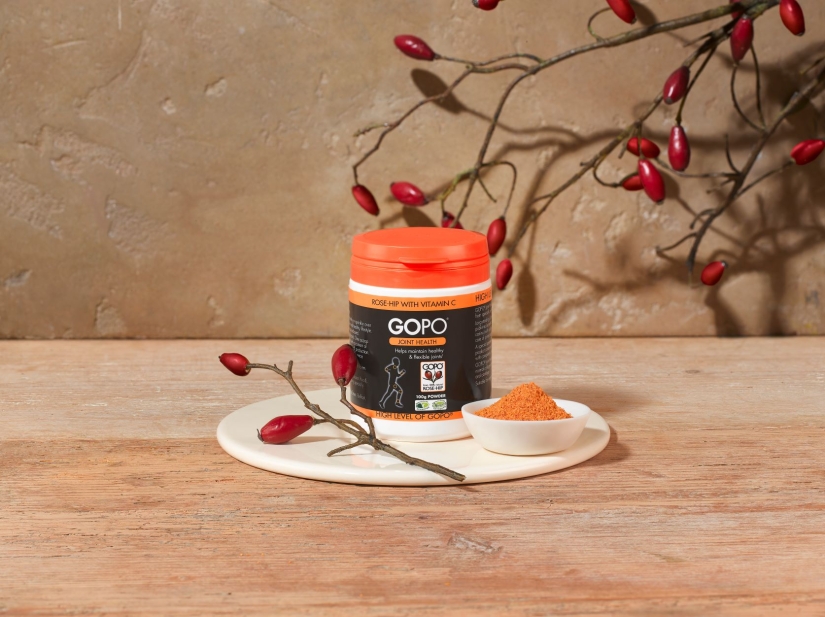Amanda Brame, responsible for horticulture at Petersham Nurseries Richmond, has put together some handy tips and tricks for curating your own herb garden at home.
Cruelty Free Beauty
- 4 signs you have low iron levels
- Zero Waste Beauty: Adopt a green routine with these sustainable products
- This eco-friendly beauty box is packed with refillable multi-taskers
- “I find myself using it even when I don’t need to!”
- Arctic-inspired natural skincare brand launches in the UK
- Green People launches beauty balm packaged in 100% biodegradable pot
- Lush launches same-day delivery service for its iconic handmade cosmetics
- “This cruelty-free tanning water gave me the confidence boost I needed”
- rho launches sustainable loungewear that gives back
- Rose & Caramel Raises Awareness For Women’s Self-Esteem & Mental Health With ‘I TAN FOR ME’ Campaign
- Couple launches entirely plant-based and refillable deodorant on Kickstarter
- View all
Eco Living
- Simple Hacks to Cut Your Food Waste with Gino D’Acampo
- Five Easy Ways to Reduce Food Waste
- Eat these foods to boost your mood
- Upgrade Your Cheese Toastie
- Have a healthy Christmas with these festive food swaps
- Omega-3 Health Benefits
- 5 minutes with Max La Manna
- A nutritionist’s guide to eating for healthy joints
- Easy ways to achieve your health goals
- Discover the benefits of raisins on a vegetarian diet
- Improve your gut health with California Raisins
- View all
Vegan Recipes
- Quorn Vegan Hot & Spicy Burger with Pink Slaw
- Tomato and Pumpkin Soup
- Pea and elderflower cocktail
- Matcha Coconut Ice Cream
- Vegan Lemon Bars
- Mango Salad with Thai Dressing
- Garden Gimlet
- Tofu & Green Beans Teriyaki
- Cornflakes Bombay
- Rainbow Pickle
- Soba noodles with kale and collards
- View all
Popular recipes
- Spinach and ricotta quiche vegetarian recipe
- Cheats mushroom and spinach lasagne vegetarian recipe
- Lentil bolognese vegetarian recipe
- Creamy mushroom stroganoff vegetarian recipe
- Malaysian Rendang curry vegetarian recipe
- Feta, Butternut Squash, Caramelised Onion and Cashew Nut Wellingtons
News
- THE INTERNATIONAL VEGAN FILM FESTIVAL GOES VIRTUAL
- rho launches sustainable loungewear that gives back
- M&S launches dairy-free yoghurts
- Five Easy Ways to Reduce Food Waste
- A catering company is now delivering vegetarian and vegan ingredients to your doorstep
- VegFestUK goes virtual for 2020
- Your Christmas tree could help preserve the Borneo rainforest
- Dobbies’ introduce brand new range of sustainable houseplants
- Nourish London collaborates with Freeset to create gifts that give back
- These vegan chicken drumsticks are ideal for a midweek meal
- Nudie Snacks Launches Wonky Veg Crisps
- View all
How to create the perfect herb garden at home
Whether you're sowing seeds or caring for plug plants, now is the perfect time to get going!

Pre-potted living herbs
April is the best time of year to create the perfect herb garden. Whether you want to use ready-grown plants, or start completely from scratch and sow a few seeds, now’s the perfect time to get going. In the current situation, with the worldwide Coronavirus pandemic putting us all in lockdown, you may not be able to find herb plants in your local garden centre. If this is the case, you can, with a little extra care, use living supermarket-grown herbs still in the pot. A word of warning though: they are not hardy, meaning they are only suitable for keeping indoors – so before you can plant them, you will need to keep them indoors for around three weeks, harvesting them very, very sparingly. After this period, harden them off outside for around 5-7 days (place the plants outside during the daytime and bring them back in at night). This gets them acclimatised to the outdoors and ready to pop them into containers where they’ll romp away very quickly. You’ll need to follow this process again around late summer time to ensure a good succession, providing fresh herbs way into the autumn.
Herbs for cooking
At Petersham Nurseries we have the luxury of a beautiful kitchen garden which we cram full of many different varieties of herbs ready for the chefs to add into their delicious creations. Top of the chefs list are borage, sage, thyme, rosemary, and basil, not forgetting Moroccan mint. Out of these, borage is best grown from seed. It requires a little more room to grow than the others, but it’s definitely the one we love the most. The pretty little blue flowers are edible and are sprinkled over pasta and pastry alike. Once established, the tips of the plant make for delicious borage fritti – crispy deep-fried morsels.

Potting tips
Generally, herbs aren’t too fussy and will cope quite well in containers as long as they are around 40cm deep, have drainage holes and are filled with a soil-based compost such as John Inns No 2. Failing that, a good organic water-retaining compost is also suitable. Regular watering is really important and if you are able to site them out of the midday sunshine, this will be much easier to manage and also encourage a strong steady growth. Also, give them a liquid feed every 2-3 weeks with an organic seaweed fertiliser – this will help speed up the growth for a regular supply.
Top tip! To get the look, take inspiration from the nurseries. Keep the containers simple by filling each one with a single herb type and grouping them together for that final stylish impact.
More from Vegetarian blog

We hear from nutritionist and former champion athlete, Anita Bean on the best foods to eat to support joints
ADVERTISEMENT FEATURE

We've teamed up with Cherry Tomato Piccolo to bring you these delicious mid-week wins
ADVERTISEMENT FEATURE

ADVERTISEMENT FEATURE

Say hello to the Cherry Tomato Piccolo and try this perfect summer cocktail recipe
ADVERTISEMENT FEATURE

Has your health taken a hit during lockdown? California Raisins is here to support your health goals with easy ideas to make a positive change
ADVERTISEMENT FEATURE




